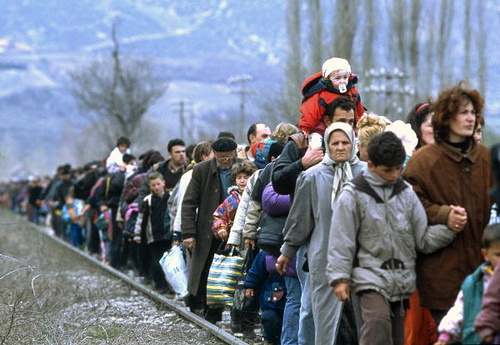In case you missed it, last Sunday Episcopalians observed Genocide Remembrance Day. April 24th is the anniversary of the Armenian genocide a century ago, and for the past decade, the date has been fixed on our church’s Calendar of Lesser Feasts and Fasts. On this date, we remember the victims of not only that first modern genocide, but also more recent ones, including the Holocaust, Cambodia, Bosnia, Rwanda, and Darfur.
Genocide Remembrance Day is a reminder of humankind’s continued capacity for evil on a massive scale. These crimes against humanity shock the conscience, but not our understanding of human nature. Our doctrine teaches that we are both compassionate and cruel, made in God’s image but also slaves to sin. Like Jesus, the innocent victims of genocide died at the hands of secular authorities whose sense of superiority and perversion of justice led them to commit acts at once terribly inhumane and tragically human.
But April 24th is more than a day of mourning. It is also a call to action. Genocide can be prevented, and it can be stopped. Reconciliation and evangelism – two priorities of Presiding Bishop Curry’s ministry – offer means of doing so. By recognizing our shared humanity and respecting ethnic, racial and other forms of diversity, reconciliation enables peaceful settlement of differences. By proclaiming the Gospel and Jesus’ message of forgiveness, evangelism replaces the hate that animates genocide with hope.
However, when reconciliation and evangelism fail, more forceful action may be necessary. Following the international community’s failure to halt the 1994 genocide in Rwanda, world leaders recognized the need for humanitarian intervention in extraordinary circumstances. The “Responsibility to Protect” norm emerged as a result, and was ultimately endorsed by the United Nations in 2005.
The Responsibility to Protect, or “R2P” as it is called, obligates states to protect their citizens from mass atrocities such as genocide. If a government fails to do so – because it is unable, unwilling or complicit – the international community has a duty to intervene. Several criteria must be met before military force can be used, criteria that parallel those in the ancient Christian “just war” tradition, including just cause, legitimate authority and last resort. Ultimately, under R2P, the United Nations Security Council must authorize intervention.
The Episcopal Church has been a leader in advocating for the Responsibility to Protect. Four years ago, our Standing Commission for Anglican and International Peace with Justice Concerns, which I chaired at the time, drafted a resolution commending the norm and urging all Episcopalians to “advocate for its adherence.” It earned widespread support, including from leaders of the Episcopal Peace Fellowship. The 2012 General Convention eventually adopted the resolution and also recommended that the Episcopal Church join the international coalition promoting R2P. Last year, we became the first faith-based organization worldwide to do so.
Our voice, and that of the church at large, is vital to the continued debate regarding the Responsibility to Protect because it is not only a legal norm, but also a moral one. It is grounded in the great commandment to love thy neighbor, and is inspired by Jesus’ parable of the Good Samaritan. Christians’ compassion for all of God’s creatures compels us to act when evil threatens. By joining the coalition “so as to shape the continued development of precautionary principles for this norm and promote its faithful implementation,” in the words of our resolution, the Episcopal Church is helping lend moral authority to the Responsibility to Protect, and helping end genocide as we have tragically come to know it.
from Matt Gobush, Diocese of Dallas
image: Kosovo refugees from UNA-UK site on R2P

